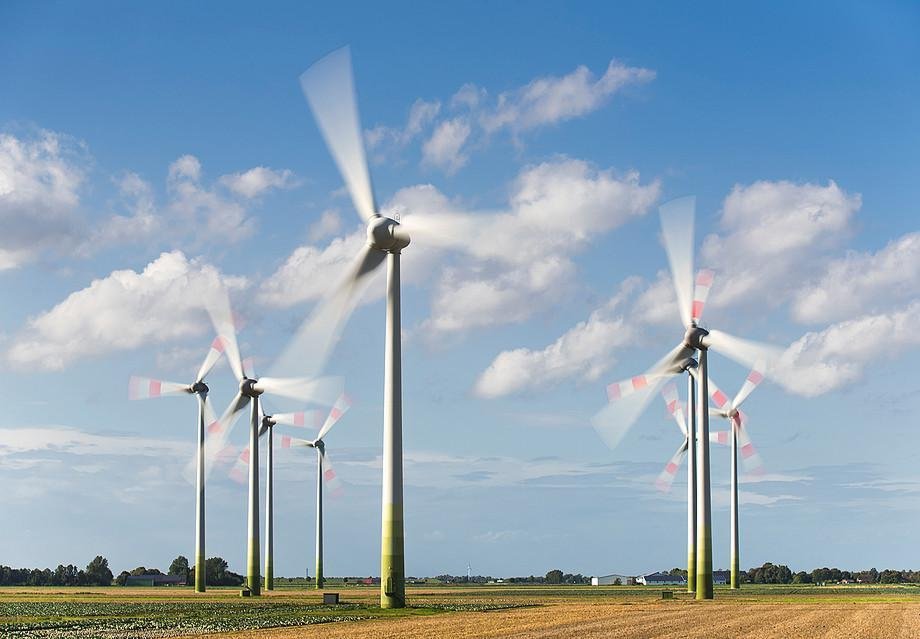Details
BMBF-Project ESN4NW: Tapping wind energy to provide sustainable computing with maximus performance

A countrywide cluster project has been launched to study the potential of what are called "windCORES". These wind turbines house data centres and supply them with the power produced on site using a system that is practically climate-neutral. The cluster managed by Software Innovation Campus Paderborn (SICP) at Paderborn University includes a team from the University of Passau headed by Professor Hermann de Meer, who holds the Chair of Computer Networks and Computer Communications.
High-performance computing (HPC) has become an essential tool in many different academic fields, including drug and climate research. Data centres with high-energy supercomputers produce quite a bit of CO2. "Energy-optimised supercomputer networks using wind energy“ (ESN4NW): This is the title of a new, nationwide cluster project headed by Software Innovation Campus Paderborn (SICP) at Paderborn University. The idea of developing a new HPC infrastructure service based on a sustainable concept was born in collaboration with SICP member WestfalenWIND IT. The Federal Ministry of Education and Research (BMBF) has awarded the project a three-year grant worth 2.5 million euros. The cluster also includes the University of Passau, the Fraunhofer Institute for Reliability and Microintegration IZM as well as three businesses: AixpertSoft GmbH, Rittal, Atos Deutschland and Zattoo.
New infrastructure with computer centres in wind farms
The cluster partners have come together to research and demonstrate the potential of what are known as "windCORES". WindCORES are wind turbines that house computer centres in their towers and supply them with the power produced on site using a system that is practically climate-neutral. The goal is to develop the infrastructure for an HPC cluster operated inside several wind turbines (WTs) where the resulting, locally available renewable energy is fed into the system to ensure maximum benefit. Any resulting waste heat will have to be taken into account as a limiting factor.
For demonstration purposes, construction will be based on an alternative approach that ventures beyond the state of the art. The project partners will develop an infrastructure that continuously calibrates the performance of the decentralised HPC cluster to changing needs using a highly data-driven process and artificial intelligence (AI). The cluster will be distributed across several wind turbines and have to make best possible use of the fluctuating power supply available. The project will include an assessment of the impact of various structural designs and operating strategies on the sustainability rating of the target system. AI-assisted operation will require behavioural and predictive models for the infrastructure and local power grid that are not yet available. "The project has scientific and technical challenges, including the intense data sourcing and data use efforts required (power grid and infrastructure), the need to integrate artificial intelligence into control loops and to ensure systemic compilation of all models with the help of a digital twin," explains Dr Gunnar Schomaker, one of SICP's managing directors. "The focus is on predicting local power availability which depends on weather conditions and on devising models for all components interacting in the system that accurately reflect the power draw and heat output behaviour of these components," Schomaker adds.
An innovative concept with intelligent circuits
One of the features that makes the project so exceptional and innovative is that the wind turbine tower will be tied in as a potential heat sink when there is no customer to buy the waste heat or a customer currently has no need for it. In such a case, the tower will be able to absorb the waste heat produced by the IT systems and cool it down. This possibility and the availability of power will serve as functional principles for operation of the HPC cluster. More specifically: The system will only run when renewable energy is actually available and waste heat can be discharged in a manner that is virtually CO2-neutral. The early priorities will be to ensure technical and economic feasibility, provide a functional and didactic demonstration of how the system works and improve the system's sustainability rating during its extended life cycle. The desired results are expected to be relevant not only for wind turbines but also for other HPC systems with other waste heat producers and users.
Dr Fiete Dubberke, managing director of WestfalenWIND IT explains the project's objectives as follows: "The project particularly addresses the challenges resulting from the energy transition and digitalisation. We want to show that, just because the energy needs of digitalisation are growing, it is not the end of sustainability improvements and that these growth needs can also be covered by renewable forms of energy using solutions that offer flexibility in the time and place of their implementation. […] The questions we want to answer are: What do we do with the waste heat generated in a wide range of industrial sectors, meaning how can we make use of that heat? Which systems that produce and use heat waste would it make sense to connect and what tasks can artificial intelligence perform?" explains Schomaker. According to him, the ‘windCORES’ concept, which won the German Data Centre Award in 2019, has already demonstrated that combining a wind turbine with a data centre can turn out to be commercially successful as well.
The University of Passau was previously awarded the "German Data Centre Award" in 2012. In the project "All4Green", a team headed by Dr Hermann de Meer, professor of computer science at the University of Passau, worked with project partners to develop a software that reconciles the energy needs of the servers with the power supply available in the grid of the utilities provider Stadtwerke and optimises the use of renewable energy in the data centre. "We now want to marry this concept with the WindCORES, as it were," says de Meer.
| Principal Investigator(s) at the University | Prof. Dr. Hermann de Meer (Lehrstuhl für Informatik mit Schwerpunkt Rechnernetze und Rechnerkommunikation) |
|---|---|
| Project period | 01.10.2022 - 30.09.2025 |
| Website | https://gauss-allianz.de/de/project/title/ESN4NW |
| Source of funding |  BMBF - Bundesministerium für Bildung und Forschung |
| Projektnummer | 16ME0619 |

